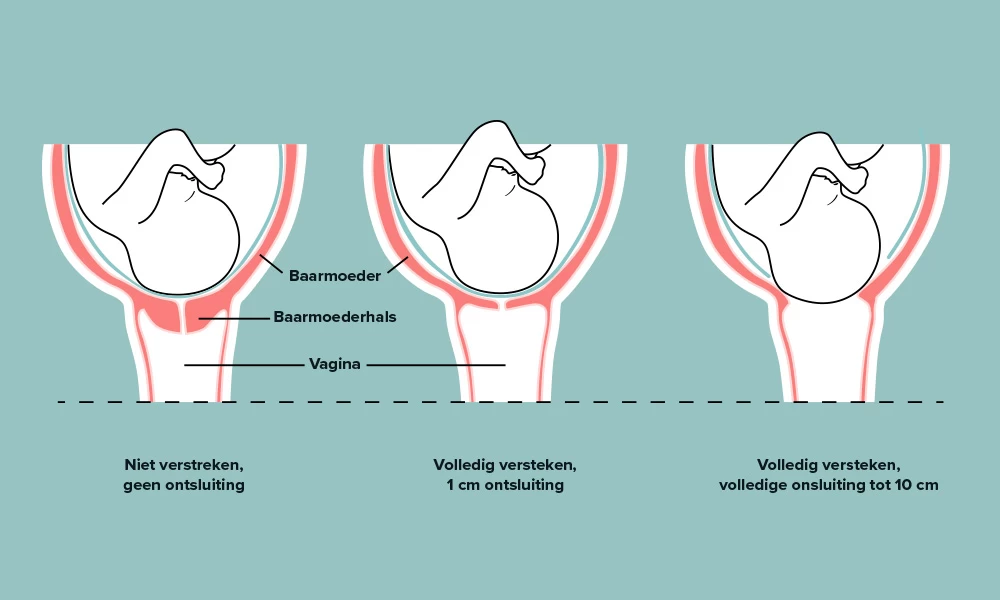The different stages of labourDuring pregnancy, the uterus, which is a muscle, grows significantly. It starts off as a small organ weighing about 100 grams behind your pubic bone and expands up to your rib cage, weighing over a kilogram! Think of your uterus as a balloon, with the cervix acting as the valve. Contractions are regular tightening of the uterus, which causes the baby's head to press against the cervix, leading to its thinning. This process is called effacement, where the cervix shortens. During pregnancy, the cervix is closed, about 4 cm long, and firm like the tip of your nose. Once the cervix is fully thinned out, dilation begins. |  |
How your body helps manage pain during labour
We don’t fully understand why contractions start, but the hormone oxytocin triggers them. However, the body’s production of this hormone remains a mystery. To help you manage pain, your body releases natural painkillers like endorphins. These hormones dull the pain slightly and make you feel more inwardly focused. As your cervix continues to open, and contractions intensify, the dilation process progresses.
Latent phaseDuring the latent phase (0-3 cm), also known as the preparatory phase, you’ll experience regular, mildly painful contractions. These occur every 5 minutes and last about a minute. In this phase, you can still manage the contractions while continuing with other activities. The cervix begins to thin and soften. Only when the cervix is fully thinned can dilation start. The length of this phase varies, and it typically lasts longer if it's your first baby. | Active phaseOnce you're around 3-4 cm dilated, you enter the active phase. Contractions become stronger and more painful, occurring every 3-5 minutes and lasting more than a minute. You’ll need to focus more on managing the contractions. In first-time pregnancies, dilation progresses at about 1 cm per 1-2 hours. If this isn’t your first baby, this phase tends to be quicker. Around 7-8 cm, you may enter what’s called the transition phase, where contractions are at their peak and most painful. Once fully dilated, your cervix is open enough for the baby to pass through. |
Pushing: let your body do the work
At the peak of a contraction, you’ll often feel an urge to push, known as reflexive pushing. This sensation grows stronger, and eventually, it becomes impossible to resist. Pushing contractions help move the baby down, but your strength is still needed to push the baby out. With a first baby, pushing usually takes 1 to 1.5 hours, but it’s often shorter with subsequent children. Once your baby is born, the pain from the intense contractions disappears almost immediately.



